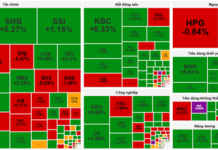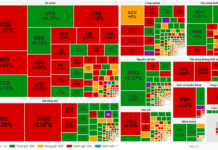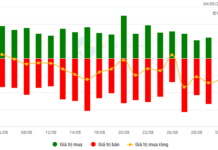According to the Vietnam Real Estate Brokers Association, the experience of other countries shows that credit policy is one of the essential tools for governments to regulate the real estate market. Many of the policies successfully implemented by other countries can be referenced, learned from, and applied in Vietnam.
Drawing on the lessons learned from these countries, the Brokers Association proposes several credit policy solutions to stabilize the market when it experiences fluctuations of more than 20% in three months or other real estate market fluctuations that impact socio-economic stability, without affecting the demand for housing from end-users.
 Skyrocketing real estate prices. |
The Association suggests tightening credit policies for speculators. Specifically, to reduce the number of people borrowing for speculative purposes or using excessive leverage, financial institutions can adjust loan limits by modifying the loan-to-value ratio, requiring a higher proportion of down payment, or applying higher interest rates for second-home buyers and beyond.
Secondly, enhance credit monitoring and management. As per the Association’s proposal, the government could impose regulations on credit quality control, mandating banks to provide more detailed reporting on real estate-related loans, thereby strengthening risk oversight. Establish a credit mechanism for social housing projects, prioritizing capital allocation for projects that develop affordable and social housing to address the housing needs of low-income earners.
Additionally, the state should adopt credit relaxation policies, including reducing interest rates and providing long-term loans with preferential rates for first-time home buyers or other priority groups to maintain social stability, such as newly married couples.
To ensure the accuracy and effectiveness of these policies, the Association believes that the state needs to develop a sufficiently large, accurate, and up-to-date database to distinguish between genuine homebuyers and those engaging in speculative or exploitative activities.
Expediting the publication of real estate transaction price indices and other influential indicators is crucial to provide a basis for determining when state intervention is necessary, especially amid concerns about rising real estate prices, as evident in the current context.
For a more comprehensive regulation of the real estate market, credit policies should be coupled with the implementation of real estate transfer taxes or property taxes. Moreover, when applying regulatory policies, flexibility must be considered to maintain stability in the real estate market and minimize risks.
In the last two years, condominium prices in Hanoi have risen rapidly and substantially. The price gap between Hanoi and Ho Chi Minh City’s condominium markets has narrowed (in 2019, the primary price gap between the two markets was 30%; by 2024, the gap ranged only between 5-7%).
As of the second quarter of 2024, according to surveys and reports from major provinces and cities like Hanoi and Ho Chi Minh City, condominium prices had increased by an average of 5-6.5% quarterly and 25% annually, depending on the area and location.
The Ministry of Construction attributes the localized price increases in major cities like Hanoi and Ho Chi Minh City to the continued limited new supply and the scarcity of mid-range and affordable housing projects, which have contributed to rising prices in these markets.
Ngoc Mai
Local Governments to Report Housing and Real Estate Market Data by September 30th
The Ministry of Construction has requested that the People’s Committees of provinces and centrally-run cities report on their disclosure of information regarding housing and the real estate market for the third quarter before September 30, 2024.
The Latest Land Price List: What You Need to Know
The Ministry of Construction has assessed that the application of the new land price framework will have a ripple effect, triggering a surge in the property and housing market. Experts predict a 15-20% increase in prices compared to pre-framework levels, a significant jump that will have far-reaching implications for the industry and consumers alike.






































